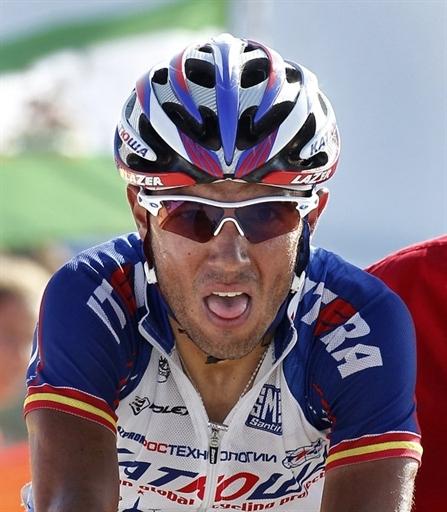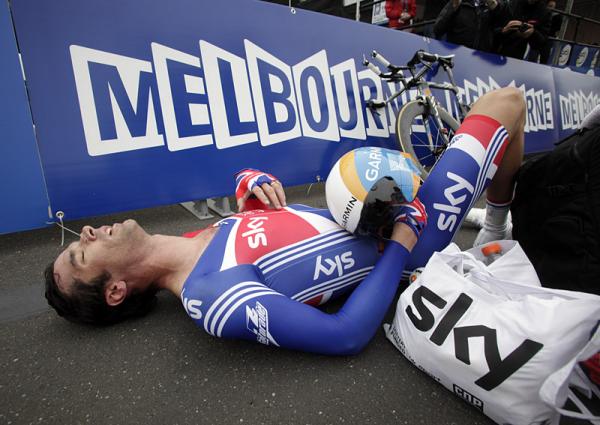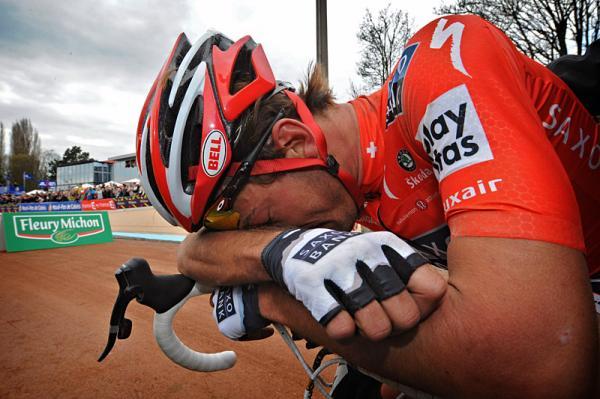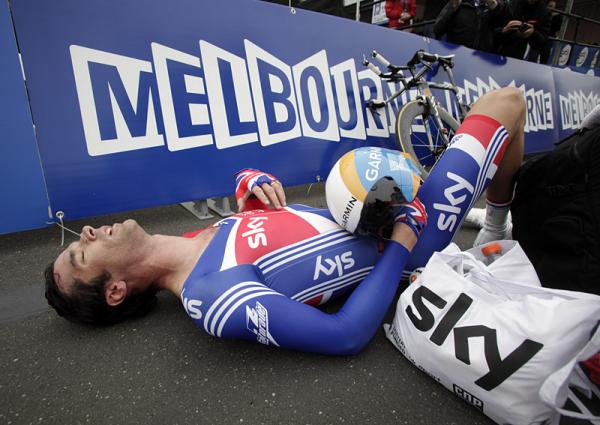Training: Get a post-ride plan
Tips for recovery from British Cycling expert



To get faster and fitter, you need to take your post-ride routine as seriously as your riding. We talk to British Cycling physiologist Jonathan Leeder about the basics of recovery.
Warm down
Try to leave time for 10 minutes of easy spinning at the end of a tough session or race as a warm down. "Light pedalling will help your body process any lactic acid that has built up in the muscles," says Jonathan Leeder, physiologist for British Cycling.
Pedal in the 80 to 90rpm range in a small gear and give your heart rate and breathing a chance to slow down. A more gradual slowdown and a few minutes of light stretching will help avoid delayed onset muscle soreness.
Refuel
Garmin-Transitions rider David Millar (pictured below) told us he swears by downing a 1.5L bottle of fizzy pop as soon as he gets off the bike after a stage. But Leeder cautions against drinking too much in one go.
"There's a window of refuelling opportunity in the first 30 minutes or so after the end of a ride or race, during which you should definitely consume a high-sugar recovery drink or bar," he says.
Get The Leadout Newsletter
The latest race content, interviews, features, reviews and expert buying guides, direct to your inbox!
"But regular sips over those 30 minutes is better – filling up too quickly with fluids is likely to trigger the need to go to the loo." Ideally, take a 4:1 carbohydrate and protein drink because this can nearly double your body's insulin response, which is essential for restocking glycogen.
Protein also provides amino acids for muscle tissue repair and can improve water absorption from the intestines to aid muscle hydration. "Low fat chocolate flavoured milk is a naturally excellent recovery drink as it combines the right mix of carbohydrates, protein, water and electrolytes," suggests Leeder.

Rehydrate
"Rehydration is vital for recovery," says Leeder, "and it can start straight away with your recovery drink." Working out your sweat rate by weighing yourself naked before and after a training ride will take some of the doubt out of how much you need to drink during and after rides.
The difference between the two weights plus whatever you drank during the ride (remember 1 litre weighs 1kg) divided by the duration of the ride in hours will be your sweat rate. Going to the loo in-between the weigh-ins will invalidate the test, of course. "The guideline is to replace 1kg (1 litre) of lost 'sweat' with 1.5 litres of fluids and electrolytes," says Leeder.
Compression
Evolved from post-operative medical garments designed to prevent venous thrombosis, there's now a whole range of performance cycling shorts, longs, jerseys and base layers that claim to improve recovery by stimulating blood circulation.
"Many top riders sleep in compression tights on stage races, and you'll get the best benefits by putting them on within an hour of getting off the bike," says Leeder. They're also a whole lot easier to administer (and a lot more appealing) than the more effective circulation stimulation strategy of taking an ice bath within an hour of your tough ride.
"There's strong research-based evidence that 10-15 minutes of immersion in water at 10-15 degrees Celsius will reduce the perception of muscle soreness," says Leeder, "which is why some amateurs have been known to use wheelie bins full of ice water for a DIY plunge."
Sleep
Almost as important as nutrition for recovery is sleep – though not necessarily immediately after a ride! "Sleep is the body's most potent recovery tool and without a full, undisturbed night's sleep, you won't be able to benefit from your training," Leeder adds.
Quality sleep promotes cellular growth and repair, and eight hours a day is recommended, with every hour you're asleep before 12am counting almost double for physiological repair, according to research.
Structure
Leeder is also adamant that the structure of your training periods and intensity is crucial to factor in recovery, including active recovery. "That's one of the most important reasons for measuring the length and intensity of your sessions – for instance with a heart rate monitor." You should also try to assess and record how your body is coping with this load by keeping a training diary with regular weigh-ins and resting heart-rate measurements.